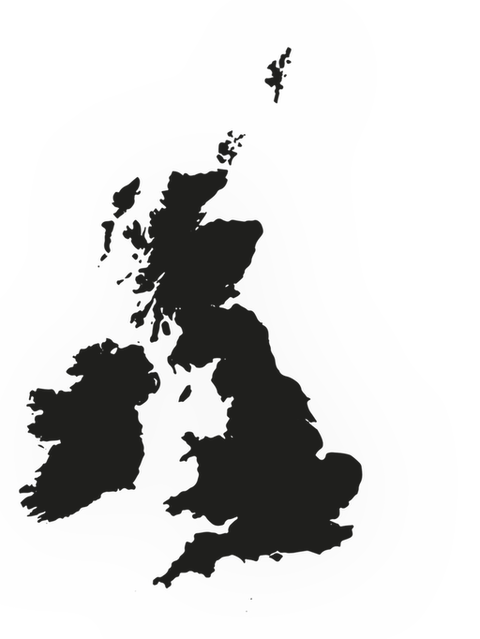









UK nuclear power through the years
From Sellafield to Hinkley Point C, the appearance, disappearance and even non-appearance of nuclear power plants across the UK has provided plenty of headlines. The latest, Hitachi’s announcement to pull out of building a reactor in Wales this January, has been described as a £13bn blow to the economy. Molly Lempriere tracks the rise and fall of UK nuclear over the decades
( 1956 - 2019 )
( Hover on or tap the nuclear pins )
1959
Chapelcross 1, 2 and 3 (4 in 1960)
Scotland’s first nuclear power plant was Chapelcross in Dumfries. Reactors 1, 2 and 3 began production in 1959, with Chapelcross 4 starting in 1960. The plant had a maximum capacity of 196MW, and ran for over 40 years. Decommissioning began in 2004, and final site clearance is expected in 2095.
1997
THORP
The Thermal Oxide Reprocessing Plant (THORP) nuclear fuel reprocessing plant at Sellafield officially opened in 1997. It was announced in 2018 that operations had stopped, but the plant will continue holding spent fuel until the 2070s. It cost £1.8bn to construct.
1971
Wylfa 1 and 2
Construction of Wylfa 1 and 2, Wales’ second nuclear power plant on the Isle of Anglesey, began in 1963, and began producing energy in 1971. The plant had a capacity of 980MW, and continued producing power until 2015 when decommissioning began.
2019
Wylfa Newydd
A new power plant was being planned by Horizon in Anglesey, next to the site of the previous nuclear plant that is currently being decommissioned. However, the future of the £20bn Wylfa Newydd nuclear plant is currently uncertain, after Horizon’s parent company Hitachi suspended its development plans. The plant was expected to have a capacity of 2,900MW and be operational by the mid-2020s, to continue operation for 60 years.
1965
Hinkley Point A
The first nuclear reactor built at the Hinkley site in Somerset began producing energy in 1965 and was decommissioned in 2000. The plant had a capacity of 500MW.
2018
Hinkley Point C
The Hinkley Point C nuclear power plant was approved by the UK Government in 2016, and on the 27 March 2017, the Office for Nuclear Regulation gave its consent for the construction of the plant. Work began in 2018, and the first reactor is expected to be operational by 2025, according to majority owner EDF energy. It is the only nuclear power plant under construction in the UK, and is expected to cost around £20bn, with a capacity of 3,200MW.
1962
Berkeley 1 and 2
Berkeley 1 and 2 also began producing energy in 1962, however decommissioning began in 1989, making it the first nuclear plant to be decommissioned in the UK. The plant, located on the shore of the river Severn in Gloucester, had a total capacity of 276MW.
1962
Bradwell 1 and 2
Beginning production in 1962, Bradwell 1 and 2 in Essex had a capacity of 242MW. Decommissioning began in 2002, with all fuel removed from the site in 2005.
1956
Sellafield
Sellafield was the world's first industrial-scale nuclear power. Built in Cumbria and costing £35m, it started operating in 1956 and was only decommissioned in 2003.The power plant had four reactors, and a total capacity of 194MW.
1966
Sizewell A
In 1966, Sizewell A began operations in Suffolk, at a cost of £65m. The plant’s two reactors had a total capacity of 420MW, which were decommissioned in 2006.
1995
Sizewell b
The last nuclear power plant built and connected to the grid was Sizewell B in 1995. With a capacity of 1,188MW, it is currently operated by EDF Energy and is the UK’s only pressurised water reactor. It is planned to continue production until 2035 when it will be decommissioned and the site used for another reactor.

UK nuclear power through the years
From Sellafield to Hinkley Point C, the appearance, disappearance and even non-appearance of nuclear power plants across the UK has provided plenty of headlines. The latest, Hitachi’s announcement to pull out of building a reactor in Wales this January, has been described as a £13bn blow to the economy. Molly Lempriere tracks the rise and fall of UK nuclear over the decades.
( 1956 - 2019 )
1959
Chapelcross 1, 2 and 3 (4 in 1960)
Scotland’s first nuclear power plant was Chapelcross in Dumfries. Reactors 1, 2 and 3 began production in 1959, with Chapelcross 4 starting in 1960. The plant had a maximum capacity of 196MW, and ran for over 40 years. Decommissioning began in 2004, and final site clearance is expected in 2095.
1997
THORP
The Thermal Oxide Reprocessing Plant (THORP) nuclear fuel reprocessing plant at Sellafield officially opened in 1997. It was announced in 2018 that operations had stopped, but the plant will continue holding spent fuel until the 2070s. It cost £1.8bn to construct.
1971
Wylfa 1 and 2
Construction of Wylfa 1 and 2, Wales’ second nuclear power plant on the Isle of Anglesey, began in 1963, and began producing energy in 1971. The plant had a capacity of 980MW, and continued producing power until 2015 when decommissioning began.
2019
Wylfa Newydd
A new power plant was being planned by Horizon in Anglesey, next to the site of the previous nuclear plant that is currently being decommissioned. However, the future of the £20bn Wylfa Newydd nuclear plant is currently uncertain, after Horizon’s parent company Hitachi suspended its development plans. The plant was expected to have a capacity of 2,900MW and be operational by the mid-2020s, to continue operation for 60 years.
1965
Hinkley Point A
The first nuclear reactor built at the Hinkley site in Somerset began producing energy in 1965 and was decommissioned in 2000. The plant had a capacity of 500MW.
2018
Hinkley Point C
The Hinkley Point C nuclear power plant was approved by the UK Government in 2016, and on the 27 March 2017, the Office for Nuclear Regulation gave its consent for the construction of the plant. Work began in 2018, and the first reactor is expected to be operational by 2025, according to majority owner EDF energy. It is the only nuclear power plant under construction in the UK, and is expected to cost around £20bn, with a capacity of 3,200MW.
1962
Berkeley 1 and 2
Berkeley 1 and 2 also began producing energy in 1962, however decommissioning began in 1989, making it the first nuclear plant to be decommissioned in the UK. The plant, located on the shore of the river Severn in Gloucester, had a total capacity of 276MW.
1962
Bradwell 1 and 2
Beginning production in 1962, Bradwell 1 and 2 in Essex had a capacity of 242MW. Decommissioning began in 2002, with all fuel removed from the site in 2005.
1956
Sellafield
Sellafield was the world's first industrial-scale nuclear power. Built in Cumbria and costing £35m, it started operating in 1956 and was only decommissioned in 2003.The power plant had four reactors, and a total capacity of 194MW.
1966
Sizewell A
In 1966, Sizewell A began operations in Suffolk, at a cost of £65m. The plant’s two reactors had a total capacity of 420MW, which were decommissioned in 2006.
1995
Sizewell b
The last nuclear power plant built and connected to the grid was Sizewell B in 1995. With a capacity of 1,188MW, it is currently operated by EDF Energy and is the UK’s only pressurised water reactor. It is planned to continue production until 2035 when it will be decommissioned and the site used for another reactor.